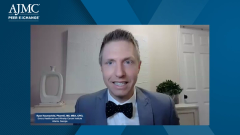
Key Economic Considerations in IgA Nephropathy: Progression to Chronic Kidney Disease
Panelists discuss how economic considerations in immunoglobulin A (IgA) nephropathy medication management vary dramatically across chronic kidney disease (CKD) stages, with early intervention costs being modest but potentially cost-saving compared with the extraordinary expenses of advanced disease management and renal replacement therapy.
Episodes in this series

Economic Considerations in IgA Nephropathy Medication Management Across CKD Stages
Early CKD (Stages 1-2)
- Preventive economics: Early intervention with renin-angiotensin-aldosterone system blockade costs $500-$1200 annually but may delay progression by 5-10 years, creating substantial downstream savings
- Diagnostic efficiency: Timely biopsy ($3000-$5000) prevents costly diagnostic odysseys and inappropriate treatments
- Medication optimization: Low-cost generic angiotensin-converting enzyme inhibitors/angiotensin receptor blockers and SGLT2i ($150-$6000 annually) provide optimal cost-effectiveness at this stage
- Monitoring costs: Appropriate laboratory surveillance (quarterly vs monthly) balances early detection with resource utilization
Moderate CKD (Stage 3)
- Therapy escalation decisions: Critical cost-effectiveness threshold for adding novel targeted therapies ($20,000-$45,000 annually)
- Progression prevention value: Each year of delayed GFR decline represents approximately $20,000-$30,000 in avoided downstream costs
- Comorbidity management: Secondary prevention of cardiovascular disease becomes increasingly cost-effective
- Hospitalization avoidance: Preventing acute kidney injury episodes ($10,000-$25,000 per hospitalization) through optimal disease control
Advanced CKD (Stages 4-5)
- Pre–end-stage kidney disease (ESKD) planning economics: Early access creation saves $15,000-$20,000 in urgent dialysis starts
- Transplant preparation value: Preemptive transplantation avoids $90,000+ in first-year dialysis costs
- Therapy de-escalation considerations: Appropriate discontinuation of certain therapies with diminishing returns
- Conservative care pathways: For appropriate patients, supportive care pathways provide patient-centered alternatives to high-cost interventions
Cross-Stage Considerations
- Insurance transition management: Ensuring coverage continuity during Medicare qualification
- Medication adherence economics: Each 10% improvement in adherence correlates with 5% reduction in hospitalization risk
- Benefit design impact: Co-pay burden significantly affects adherence to essential therapies
- Site-of-care economics: Home-based monitoring and telemedicine reduce indirect costs for patients
- Value-based care alignment: Alternative payment models increasingly reward progression prevention rather than ESKD management
Comprehensive economic evaluation should consider not only medication acquisition costs but also hospitalization avoidance, ESKD delay, quality of life preservation, and workforce participation maintenance across the disease continuum.
Newsletter
Stay ahead of policy, cost, and value—subscribe to AJMC for expert insights at the intersection of clinical care and health economics.














































